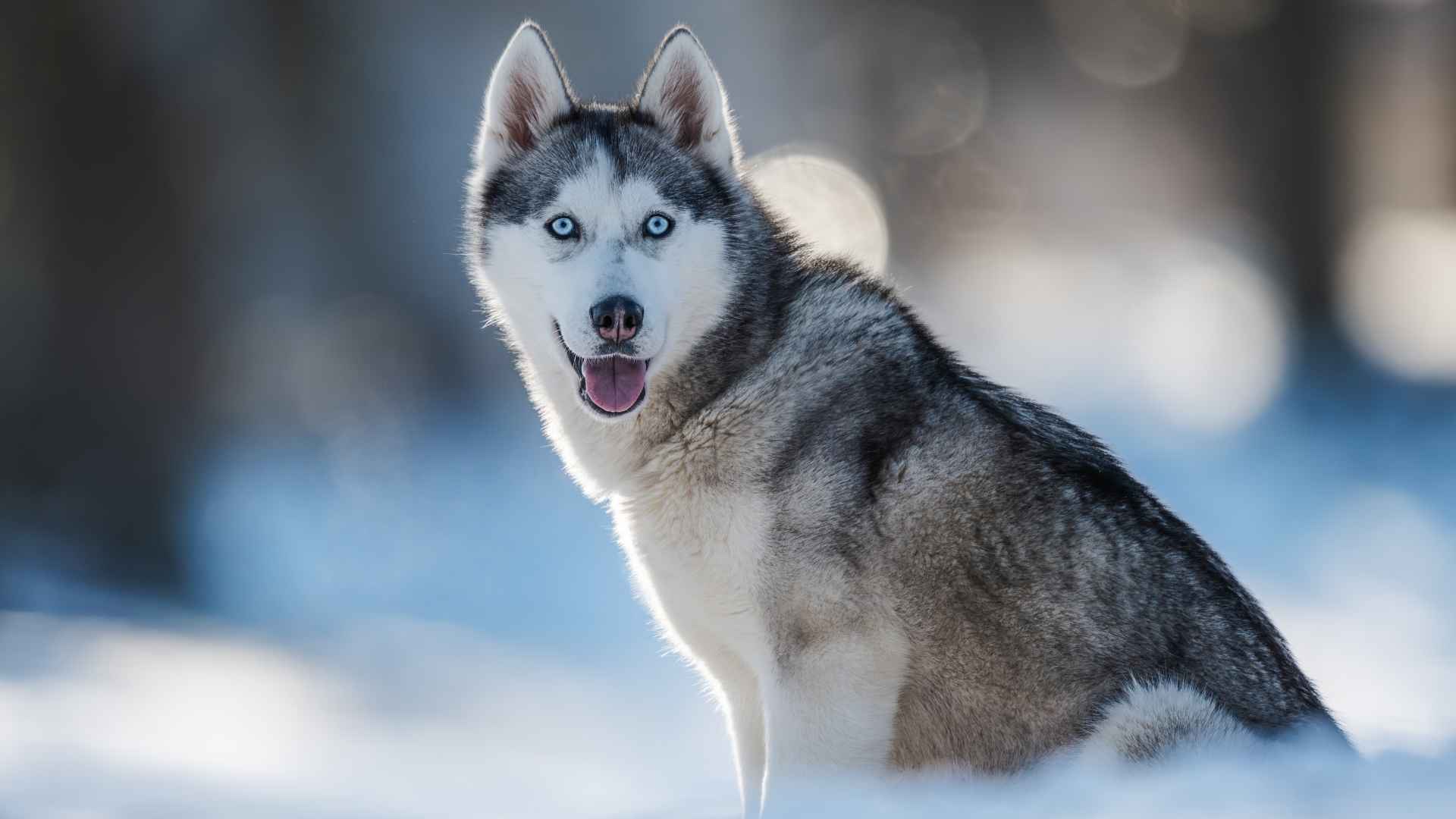There’s something undeniably captivating about a dog with piercing blue eyes. These icy-hued stares aren’t just mesmerizing, they’re also quite rare in the canine world, adding an extra dash of enchantment to an already lovable companion. Whether shimmering in a pale silver or glowing with an intense sky-blue brilliance, blue eyes tend to stand out in any crowd of pups.
Scientifically speaking, a dog’s eye color is determined by the presence of melanin in the iris, with less pigment resulting in lighter shades like blue. This genetic trait is often passed down through a specific lineage or associated with unique coat patterns such as merle. While blue eyes are usually nothing to worry about, it’s worth noting that some dogs, particularly those with two copies of the merle gene, can experience related hearing or vision issues.
Fortunately, most blue-eyed dogs live perfectly healthy lives. In this article, we’ll explore the stunning breeds that proudly carry this rare trait, turning heads and melting hearts everywhere they go.
Dog Breeds With Rare Blue Eyes
1. Australian Shepherd
A breed often spotted on ranches and rodeo circuits, the Australian Shepherd is as striking as it is smart. According to the AKC, the Australian Shepherd is intelligent, driven to work, and full of energy. Known for their remarkable agility and herding instinct, Aussies are beloved working dogs with a strong drive to stay busy.
But beyond their energetic charm lies a stunning visual feature: rare, piercing blue eyes. While this eye color can appear in any coat type, it’s particularly common among merle-coated Aussies. These eye-catching canines often boast one or both eyes in shades of vivid blue, sometimes even displaying marbled or split-color variations.
Appearance
Australian Shepherds are medium-sized and muscular, standing between 20–23 inches tall and weighing around 50–65 pounds. Their coats come in a variety of patterns, with the merle variety being the most recognized.
This mottled look, typically a swirl of blues, reds, and whites, accentuates their wild, alert gaze. Their expressive, often blue eyes give them a look of keen intelligence and curiosity.
Fact: Australian Shepherds carrying two copies of the merle gene may face increased risk of vision or hearing issues, something responsible breeders actively seek to avoid.
2. Siberian Husky
The Siberian Husky is both a visual marvel and a hardworking companion. Originally bred by the Chukchi people of Siberia for sledding and endurance tasks, Huskies later gained worldwide fame for their heroic role in the 1925 “Great Race of Mercy,” delivering life-saving serum to Nome, Alaska.
Known for their lively personalities and love of activity, these pack-oriented dogs thrive in households that match their high-energy needs. Britannica notes that the Siberian Husky enjoys cold climates thanks to its dense coat, which needs regular brushing, particularly when it’s shedding.
Appearance
Siberian Huskies are medium-sized dogs, easily recognized by their erect ears, fox-like face, and thick double coat that protects them from frigid climates. Their coat colors vary from black and white to shades of gray and red, often paired with distinctive facial markings resembling masks or spectacles.
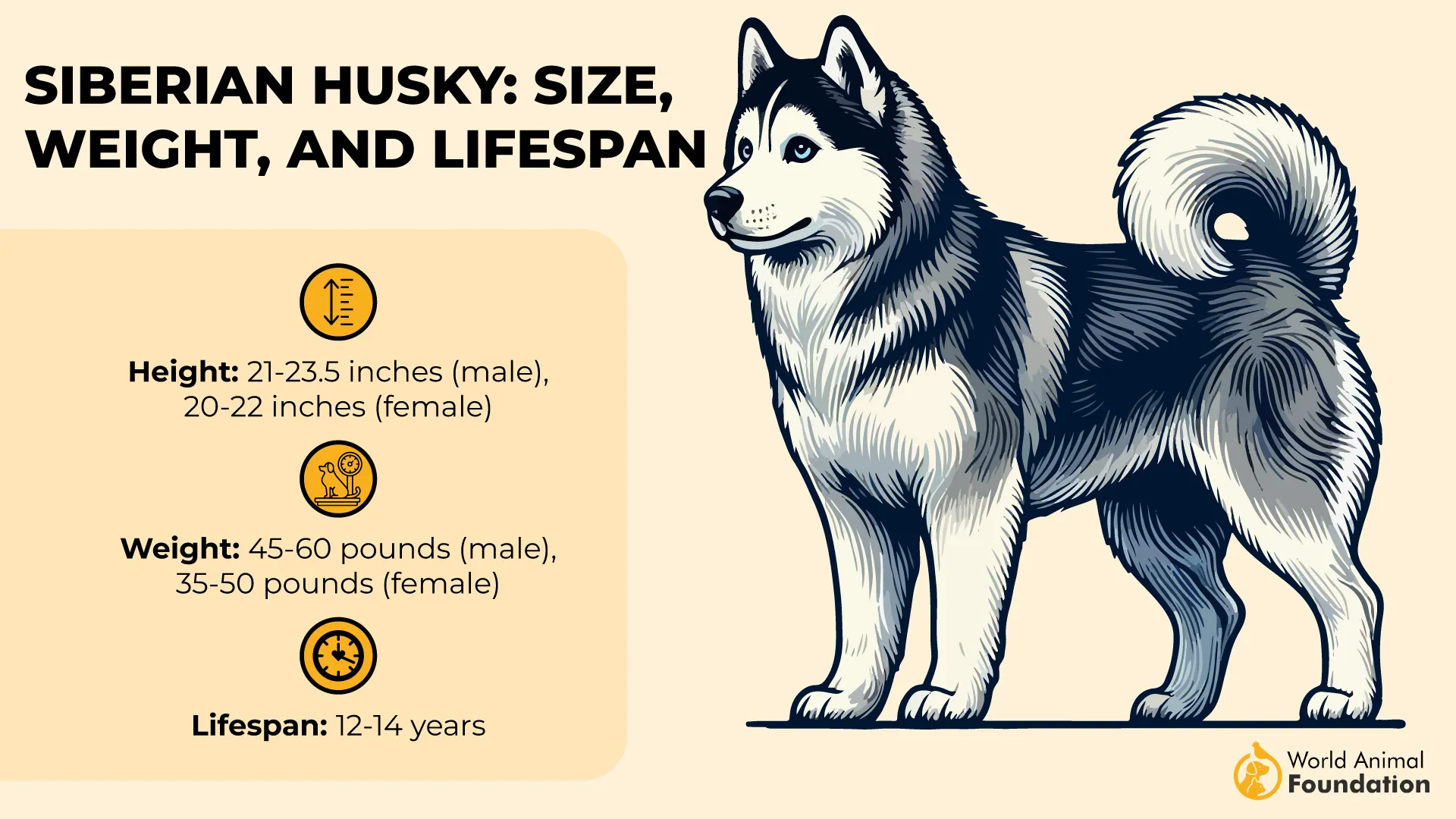
Around 50% of Huskies display the breed’s signature ice-blue eyes, thanks to a mutation in the ALX4 gene. Some even have one blue and one brown eye, or bi-colored irises.
Fact: Unlike some breeds, the gene responsible for blue eyes in Siberian Huskies is not typically associated with hearing or vision problems.
3. Border Collie
Renowned for their brilliance and unmatched agility, Border Collies are the ultimate working dogs. Originating from the borderlands between Scotland and England, they were bred to herd livestock with focus and precision. WebMD mentions that Border Collies are energetic and lively herding dogs.
Occasionally, these highly intelligent dogs can display rare blue eyes, especially those carrying the merle gene. While blue eyes are not the breed standard, they add to the breed’s already captivating presence. However, it’s worth noting that merle-to-merle pairings can increase the risk of vision and hearing problems.
Appearance
Border Collies are medium-sized, athletic, and nimble dogs. Males typically stand 19 to 22 inches tall and weigh between 30 to 55 pounds, with females slightly smaller. They feature either rough or smooth coats in a variety of colors, including black, black-and-tan, red, and merle, often paired with white markings.
Their expressive almond-shaped eyes, sometimes blue, along with their iconic “herding eye,” contribute to their intense, intelligent expression.
Fact: A Border Collie once famously learned to recognize over 1,000 words, showcasing the breed’s extraordinary intelligence.
4. Catahoula Leopard Dog

Bred for stamina and purpose, the Catahoula Leopard Dog is a driven and loyal breed with deep Southern roots. Originally developed in Louisiana for herding cattle and hunting wild game, these dogs flourish in active homes where they can put their brains and energy to good use. Hills Pet explains that the Catahoula Leopard Dog has a focused, serious nature while working, but is affectionate, playful, and protective with its family at home.
Their eye-catching appearance and formidable work ethic make them a standout among herding breeds. Blue eyes are a common and prized feature in this breed, often appearing as pale “glass” eyes, one of the many results of their merle gene inheritance.
Appearance
This medium-to-large breed typically weighs between 50 to 95 pounds and stands up to 24 inches tall. The coat of these loyal dogs is sleek and short to medium in length, often marked by a mesmerizing mix of colors and spots.
Their distinctive “leopard” pattern may include shades of black, red, gray, blue, buff, and tan. Many Catahoulas exhibit heterochromia or marbled eyes, with blue, green, or amber hues, and sometimes even multiple colors in a single eye.
Fact: Around 80% of Catahoula Leopard Dogs carry at least one copy of the merle gene, which contributes to their frequent blue or “glass” eyes.
5. Weimaraner
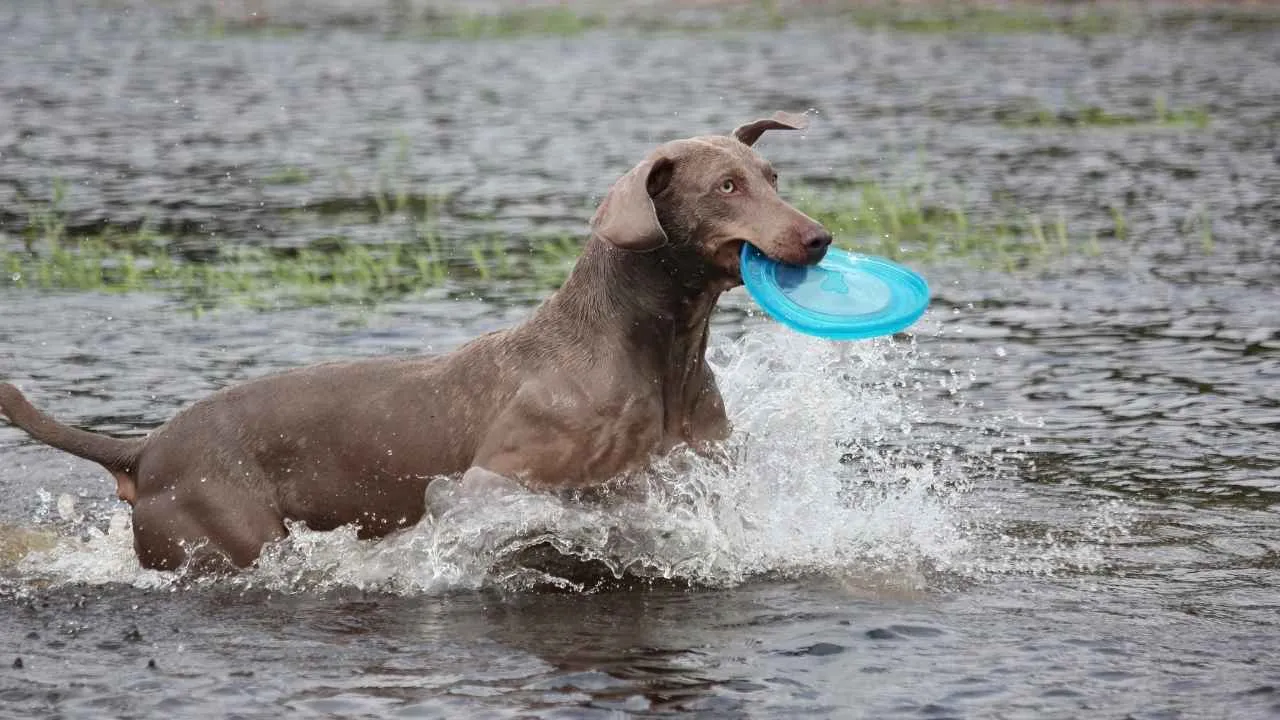
Known affectionately as the “Gray Ghost,” the Weimaraner is a breed that commands attention with both its elegant build and mesmerizing gaze. Originally bred in Germany for hunting large game, these athletic and energetic dogs are as skilled in the field as they are affectionate at home.
Among their most captivating features are their pale, light blue eyes, often seen in puppies, which may transition to an amber or gray tone as they mature. When they retain that icy blue hue, it adds an extra layer of allure to their already regal appearance.
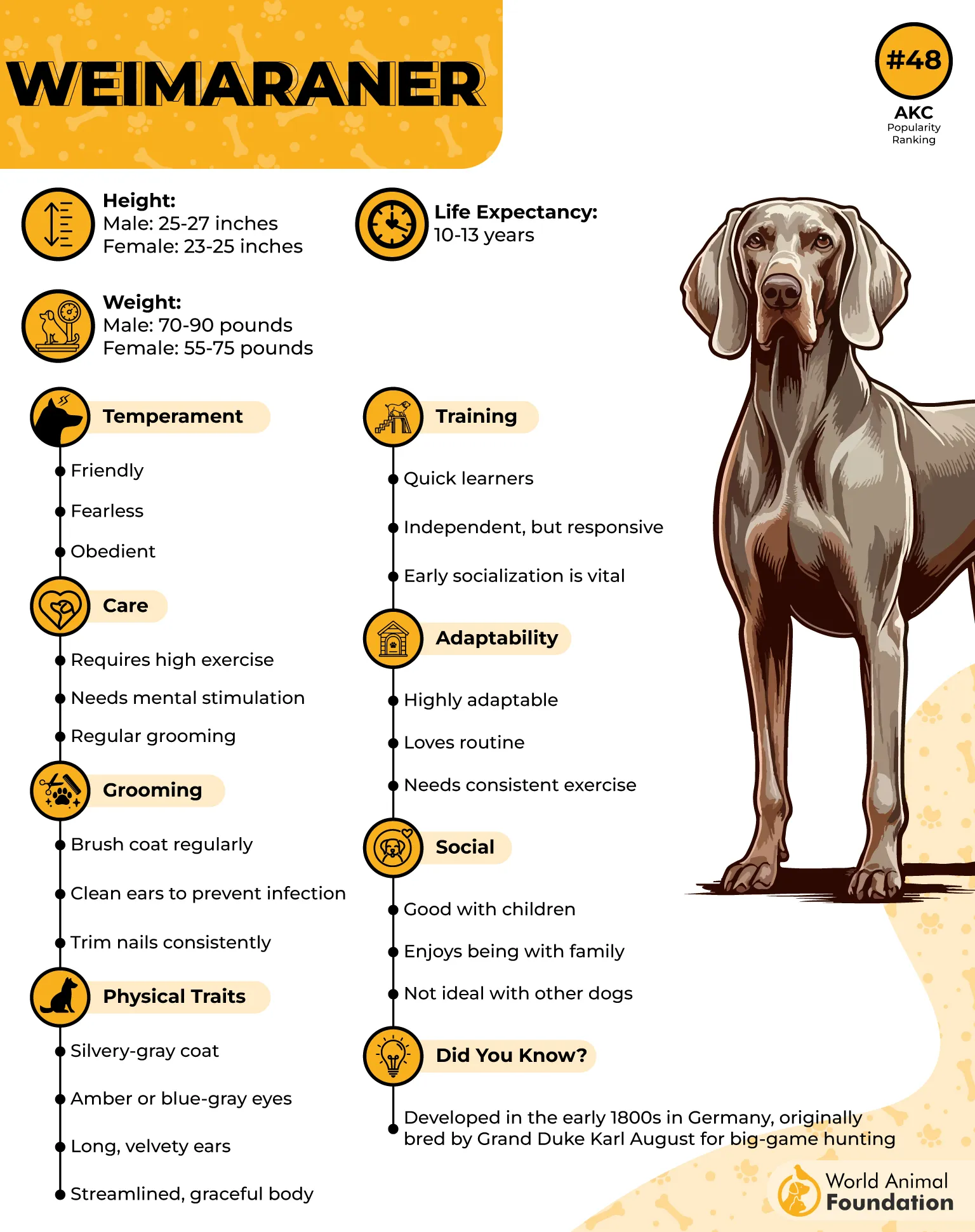
Appearance
Weimaraners are large, powerfully built dogs with a height ranging from 23 to 27 inches and a weight of 55 to 90 pounds, depending on sex. Their short, sleek coat comes in stunning shades of silver-gray, making them instantly recognizable.
Their elegant physique, paired with luminous blue or gray eyes, gives them an ethereal quality that few breeds can match.
Fact: While adult Weimaraners typically develop amber eyes, many are born with rare blue eyes that may persist, enhancing their “ghostly” allure.
6. Cardigan Welsh Corgi
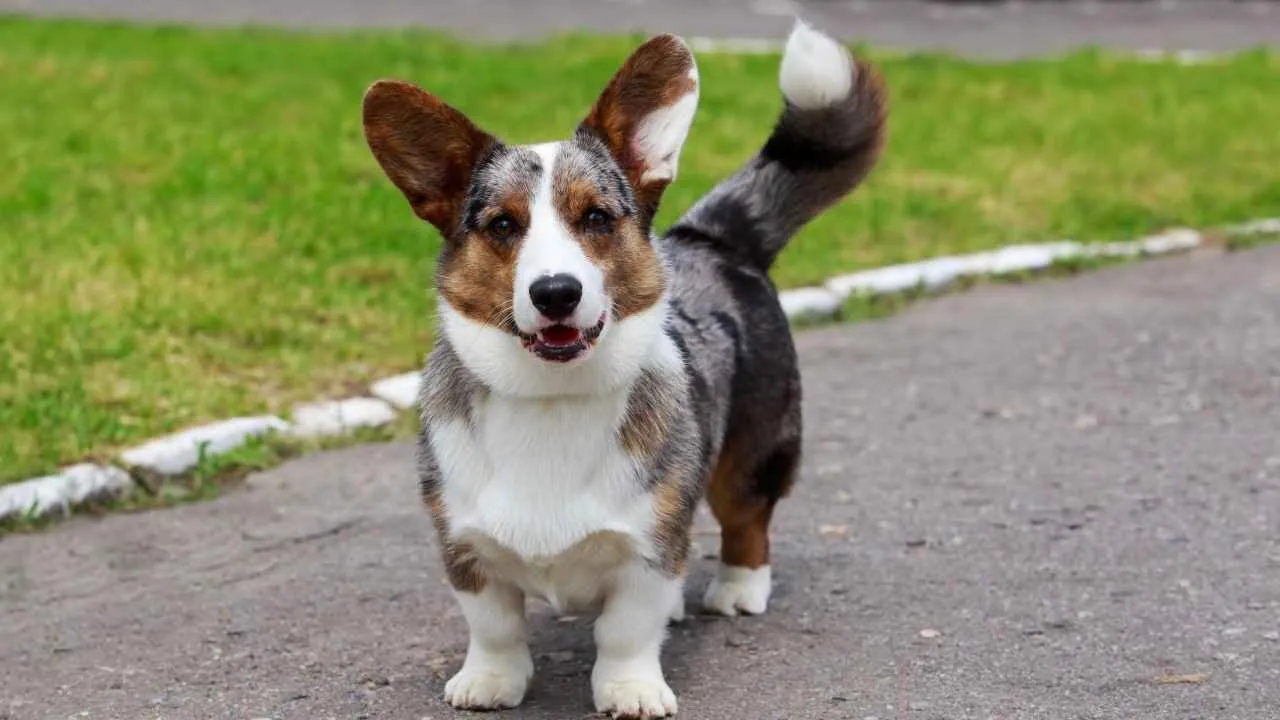
Among the few breeds known for naturally blue eyes, the Cardigan Welsh Corgi stands out, especially those with a merle coat. Unlike its Pembroke cousin, the Cardigan is more likely to sport icy blue irises that beautifully contrast with its vivid coat colors.
Known for their heritage as herding dogs, Cardigans blend intelligence, agility, and a playful attitude, making them both capable workers and devoted family companions. Their expressive eyes and cheeky personalities add even more charm to an already charismatic breed.
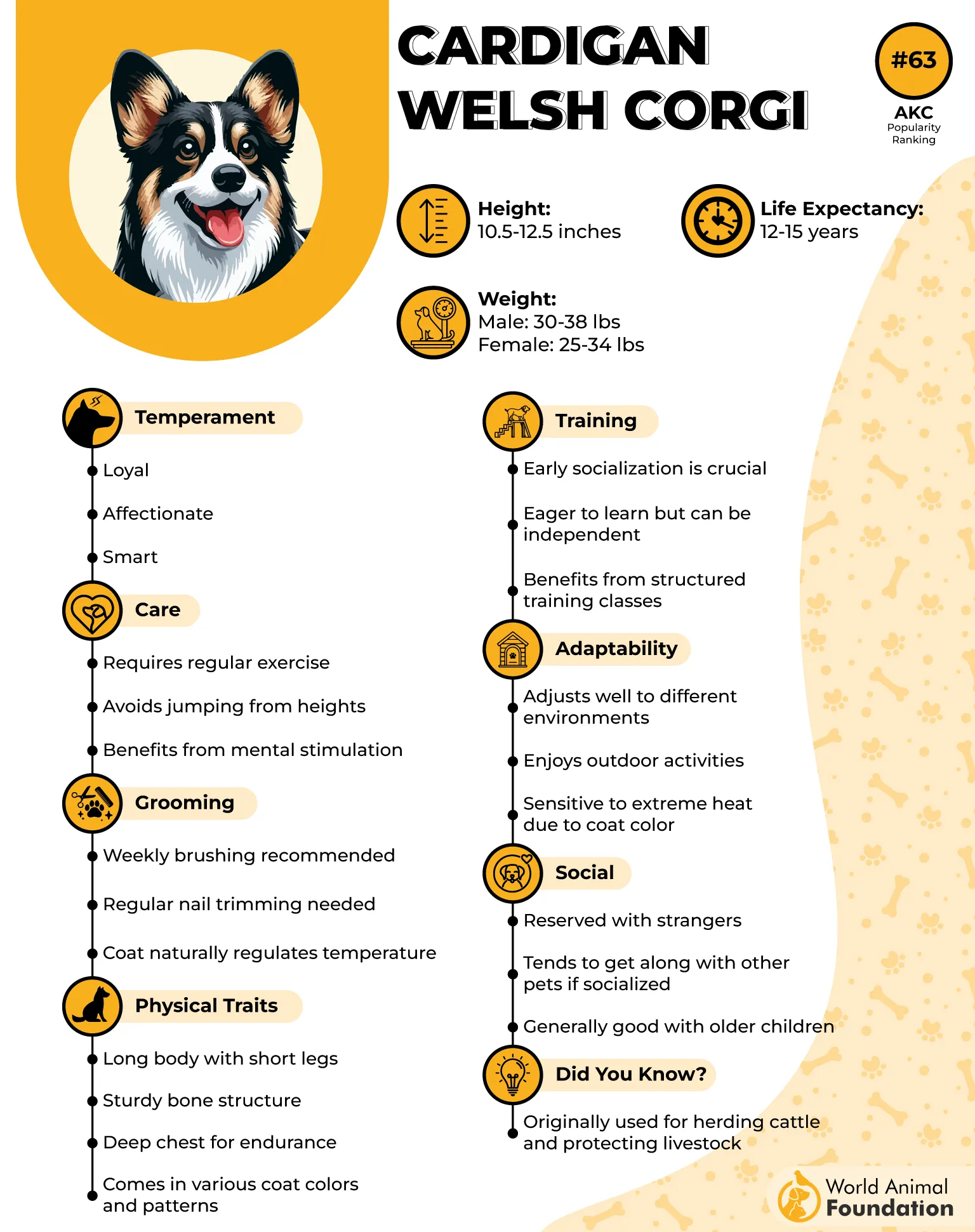
Appearance
Cardigans are long-bodied, short-legged dogs weighing between 25 to 38 pounds. They feature a dense, weather-resistant double coat in shades like red, sable, brindle, black, or blue merle, often with white accents on the chest, neck, legs, and face.
Their broad chest, deep torso, and strong build give them a sturdy yet surprisingly graceful gait. When blue eyes appear, especially in merle-coated individuals, they give the dog a striking and memorable look.
Fact: Blue eyes are most commonly seen in Cardigan Welsh Corgis with merle coats, a trait far less common in the closely related Pembroke Welsh Corgi.
7. Great Dane

The Great Dane, a towering figure among dog breeds, is affectionately known as the “gentle giant.” Originally bred to hunt wild boars, this breed has since traded its hunting days for a more leisurely lifestyle. These dogs are affectionate companions, often forming deep bonds with their families and displaying a sweet, laid-back demeanor.
Despite their size, they are known for being calm, loving, and even lapdog-like in behavior. Purina states that the Great Dane is a loving breed that fits well with an active family lifestyle. They become great family pets. Their sheer presence makes them reliable watchdogs, yet their temperament remains patient and welcoming to those they trust.
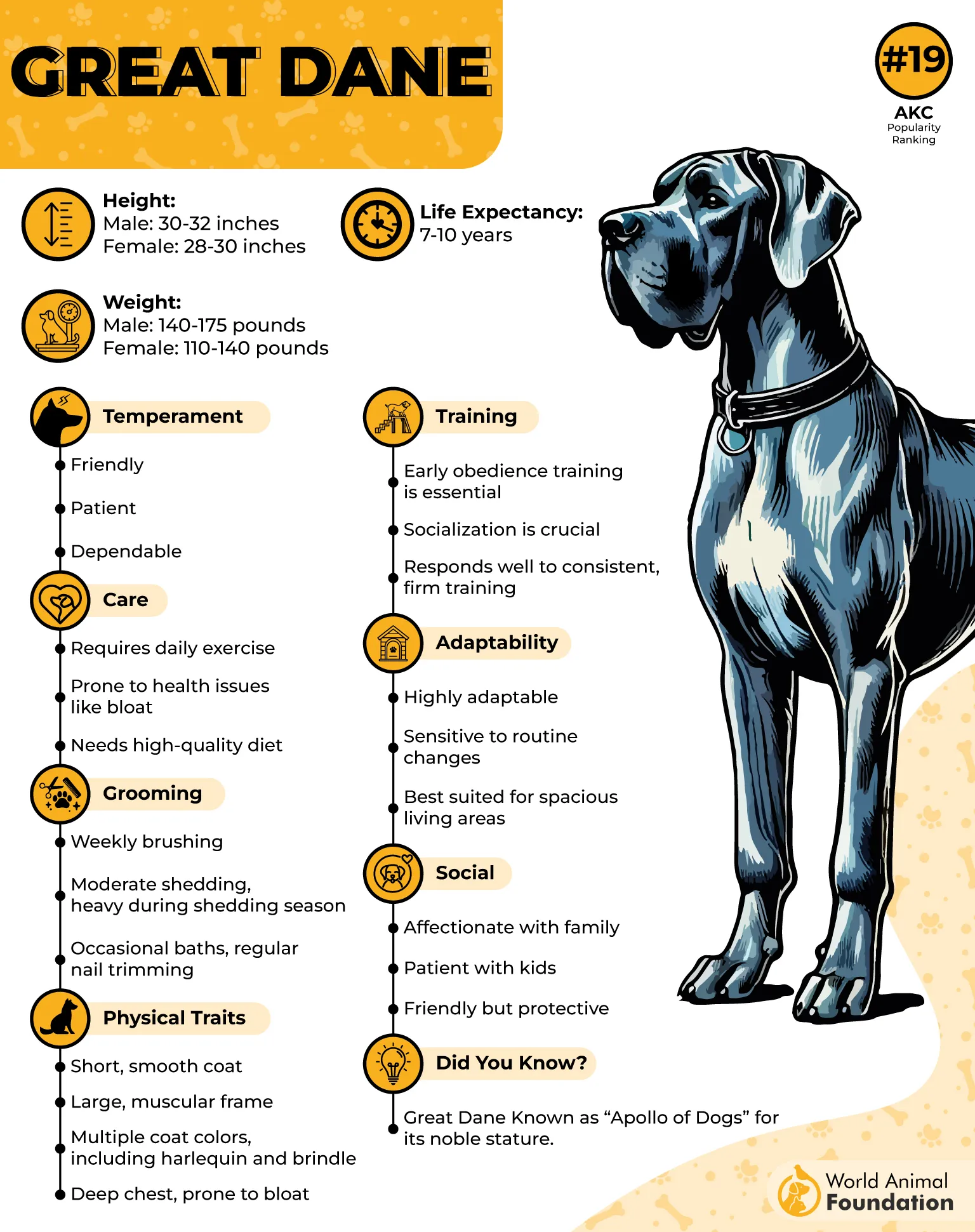
Appearance
With a statuesque build, the Great Dane typically stands between 30–32 inches tall and can weigh anywhere from 140 to 175 pounds. Their physical presence is matched by their rectangular head, expressive eyes, and sleek, short coat.
Coat colors vary widely, fawn, brindle, black, blue, and particularly harlequin and merle, which are most associated with blue eyes. These patterns sometimes result in one or both eyes appearing a vivid blue, adding to the breed’s dramatic appearance.
Fact: Blue eyes in Great Danes are officially accepted in the show ring for harlequin and merle patterns, which together account for around 40% of Embark-tested Danes.
8. Dachshund
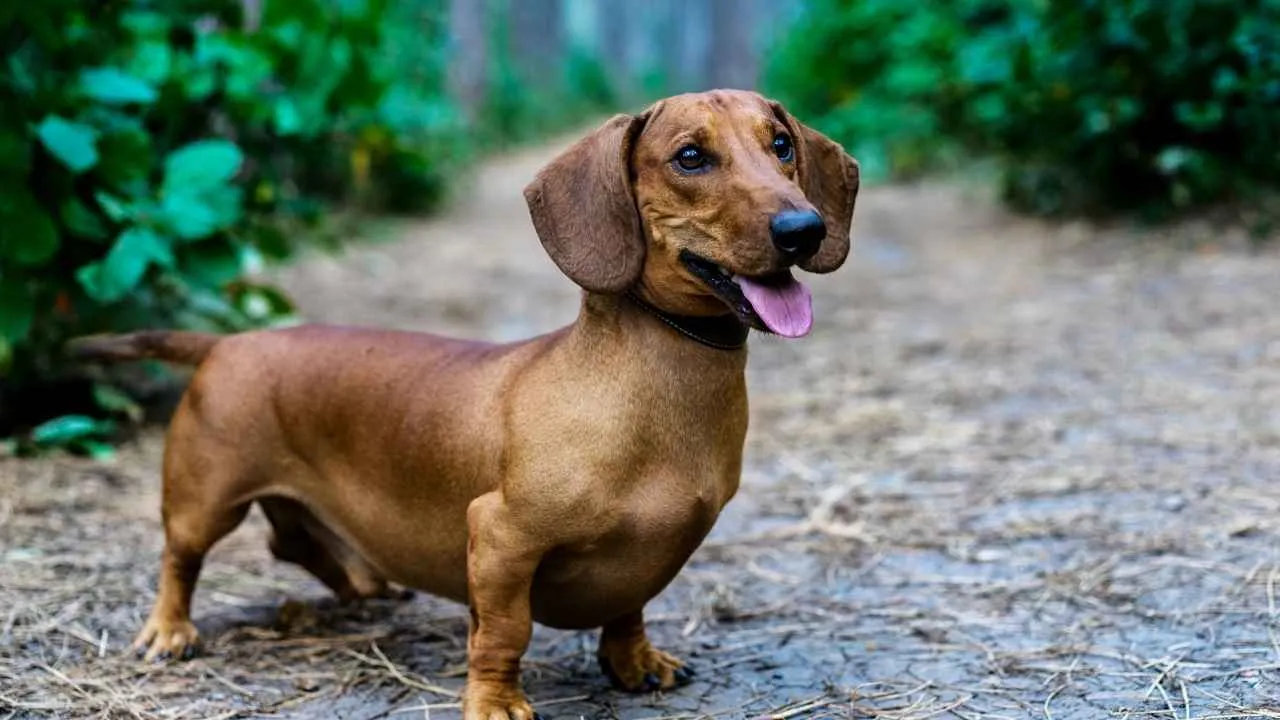
While most Dachshunds are known for their soulful brown eyes, some individuals, especially those with dapple (merle) coats, may surprise you with stunning blue eyes. Though rare, this trait adds a unique charm to the already charismatic “wiener dog.”
These small but bold hounds are packed with personality and history. Originally bred in 18th-century Germany to flush out badgers, their fearless spirit and strong prey drive remain evident today.
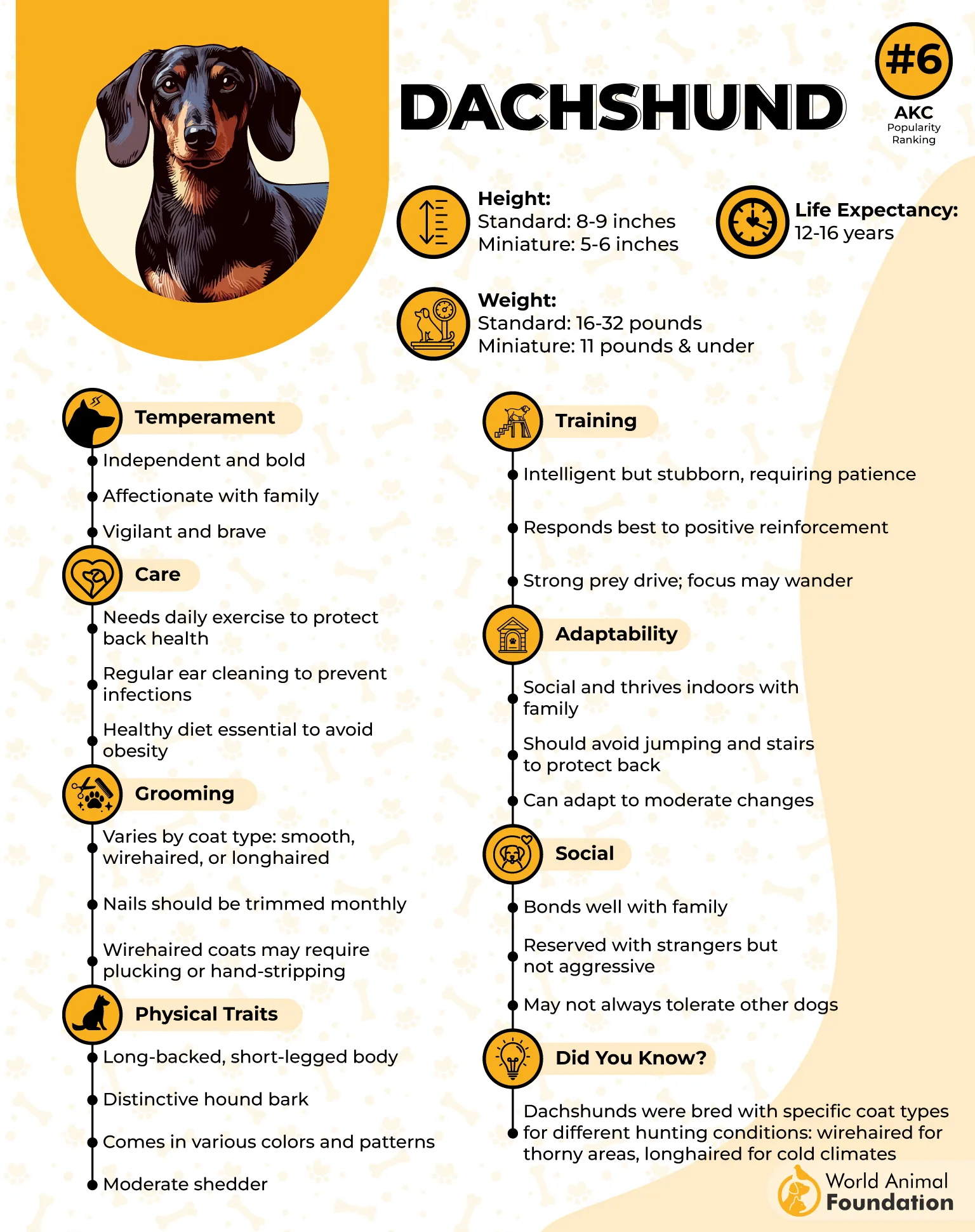
Appearance
Dachshunds are easily recognized by their long backs, short legs, and forward-flopping ears. They come in two sizes: standard (16–32 pounds) and miniature (up to 11 pounds), and feature three coat types, smooth, longhaired, and wire-haired.
Their coat colors are just as varied, ranging from classic black-and-tan to red, chocolate, and even blue, often with striking dapple or piebald patterns. It’s typically in the dapple-coated Dachshunds that blue eyes may appear, though this trait can be associated with increased risk for vision or hearing issues due to the merle gene.
Fact: The name “Dachshund” is German for “badger dog,” a nod to their original purpose as fearless burrow hunters.
9. Old English Sheepdog
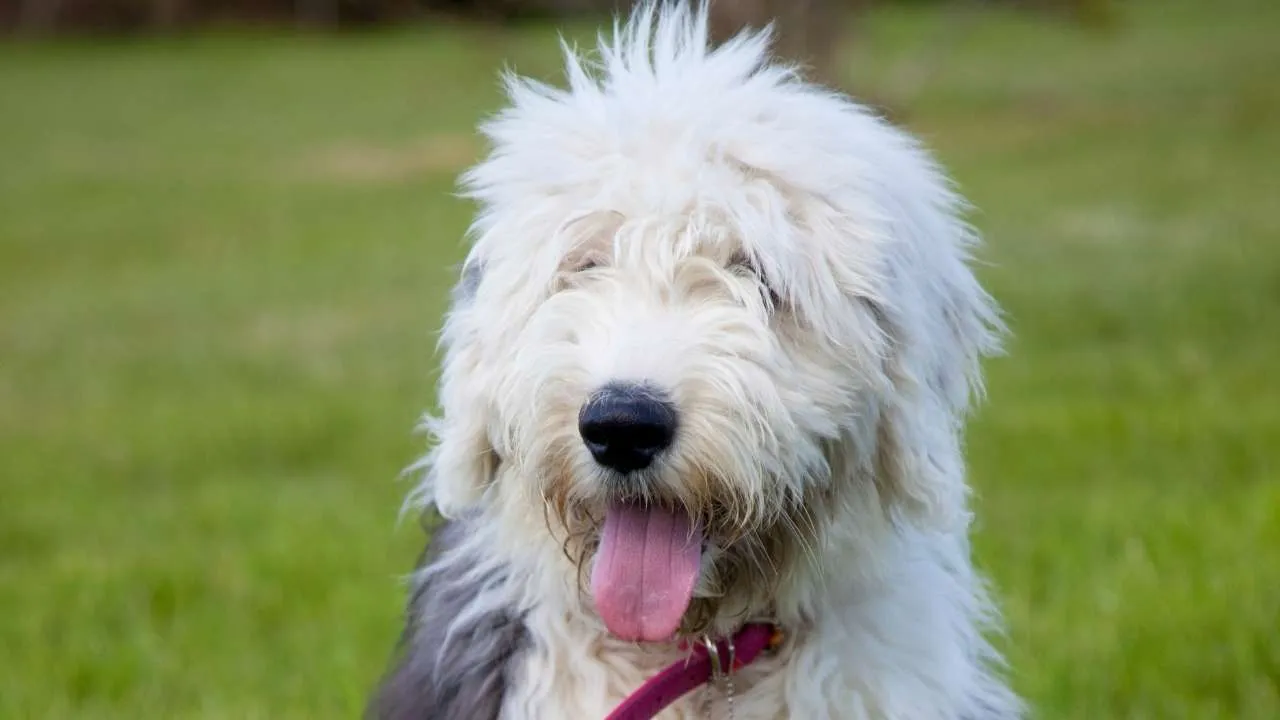
With a bounding, bear-like gait and a coat that looks more like a cloud, the Old English Sheepdog is a beloved breed known for its gentle temperament and iconic fluff. While their expressive eyes are often hidden beneath a curtain of hair, some individuals surprise with striking blue eyes, or even one blue and one brown.
This rare trait is typically linked to heavy white facial markings or merle coat patterns, lending these dogs an even more endearing charm.
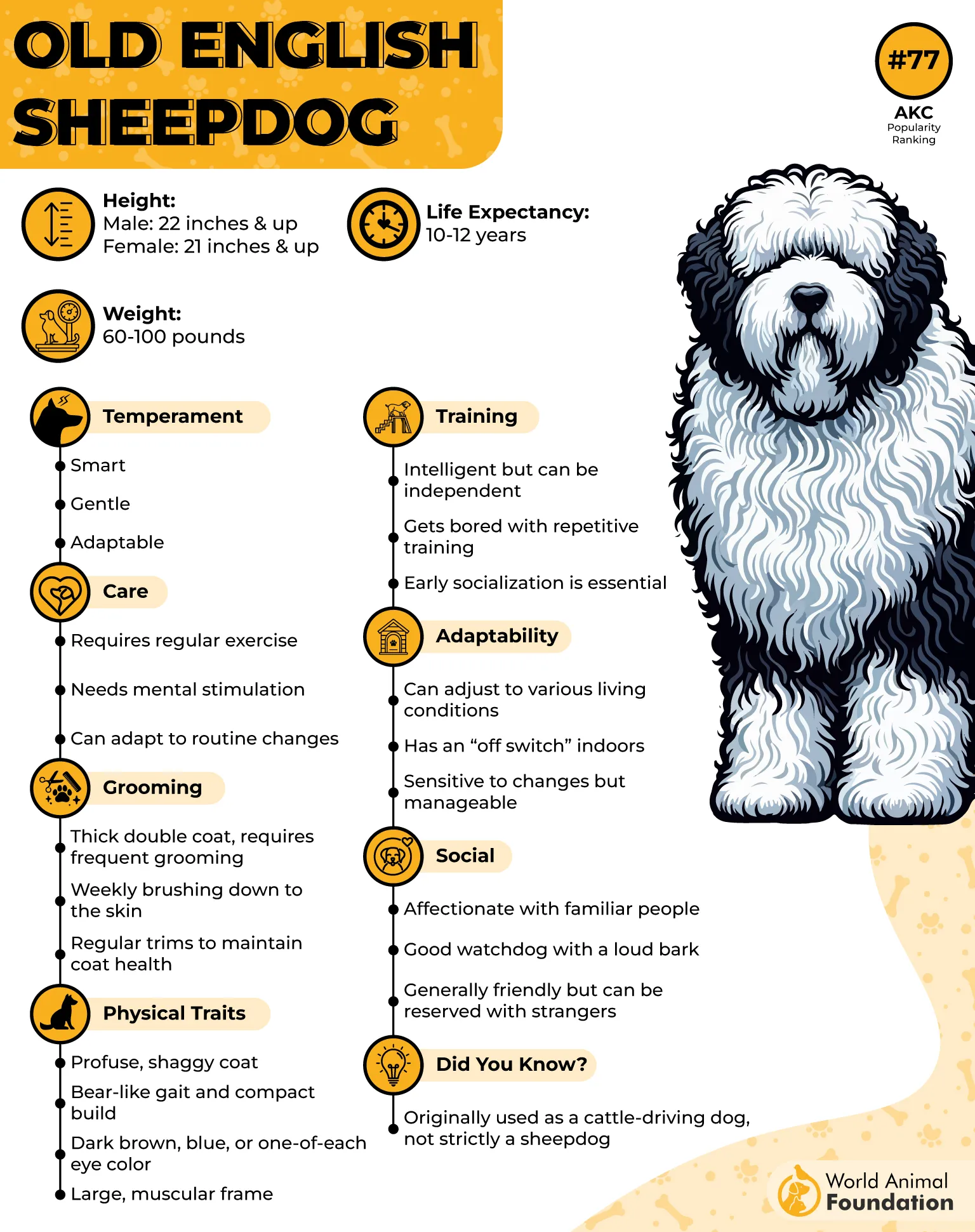
Appearance
Standing at a minimum of 22 inches tall and weighing between 60 and 100 pounds, the Old English Sheepdog is sturdy and squarely built beneath its voluminous double coat. Their shaggy fur often comes in white and gray, or shades of blue, grizzle, or merle. Though not hypoallergenic, their thick coat does require consistent grooming to keep tangles and mats at bay.
Fact: According to the American Kennel Club, Old English Sheepdogs may have brown or blue eyes, or one of each, a quirky feature that adds to their lovable personality.
10. Alaskan Malamute
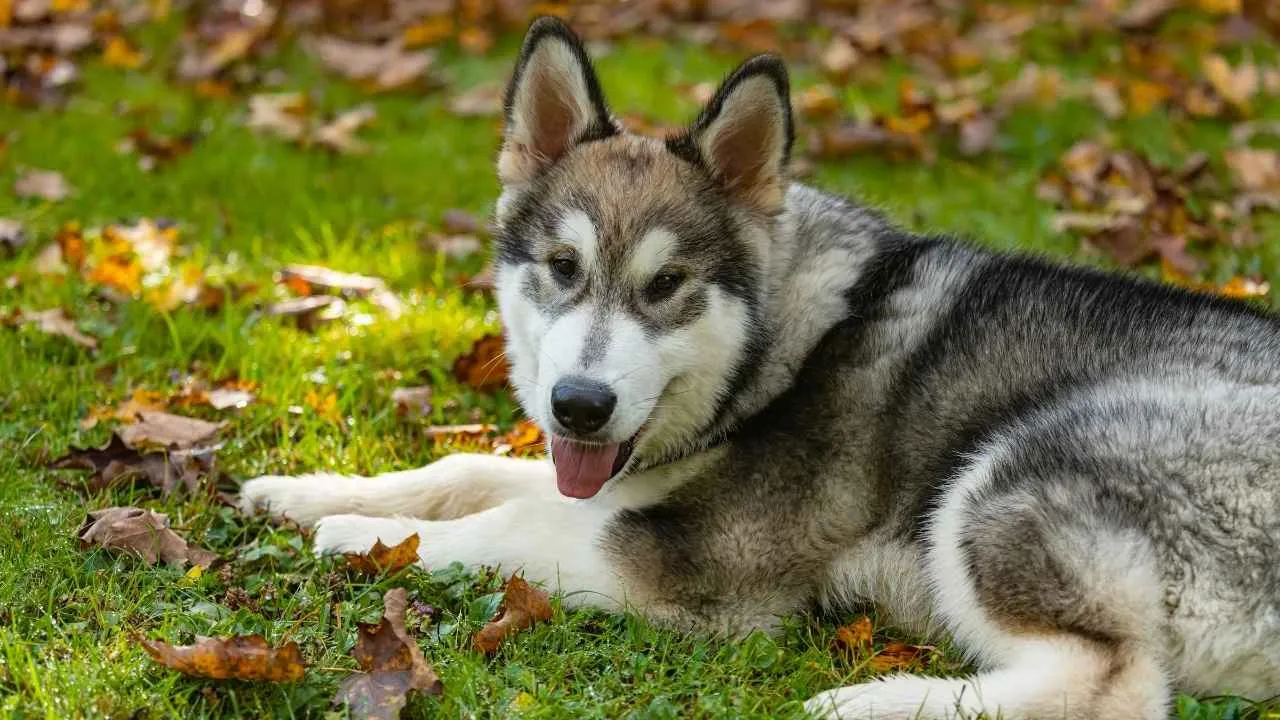
Alaskan Malamutes are commanding, strong-built dogs originally bred by the native Inuit tribe for hauling heavy sleds across snowy terrain. Known for their strength, stamina, and affectionate nature, they are often mistaken for their close cousin, the Siberian Husky.
While the breed standard favors rich brown eyes, some Malamutes can inherit rare blue eyes, typically a result of mixed ancestry with breeds like Huskies. Though blue eyes disqualify them from the show ring, they still capture hearts with their arctic beauty and loving personality.
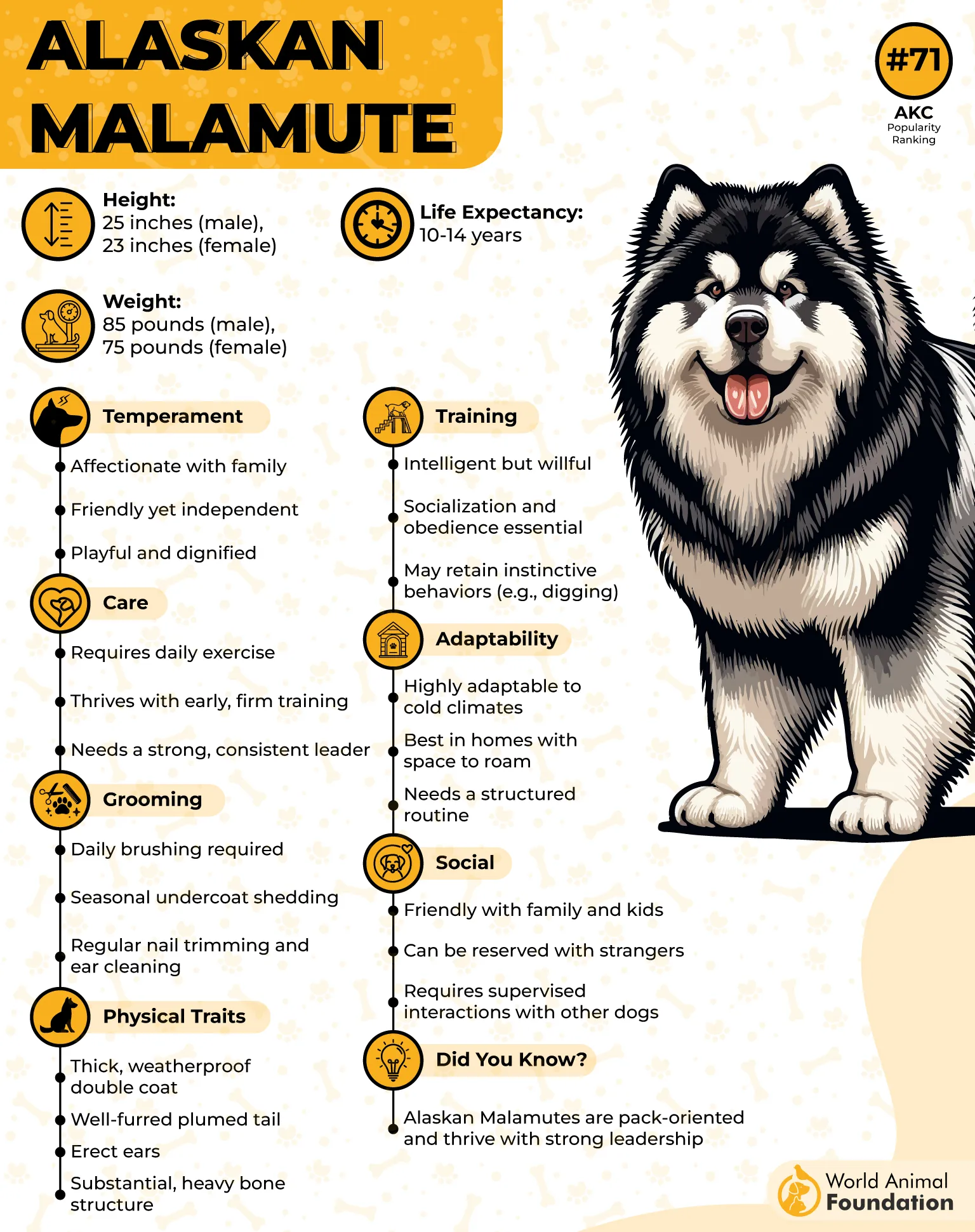
Appearance
This majestic dog breed with blue eyes features a thick, double-layered coat built to withstand frigid climates. Males can reach 27 inches in height and weigh around 85 pounds, while females are slightly smaller at 24 inches and 75 pounds.
Their wolf-like look is enhanced by a broad head, erect ears, and a powerful, sturdy frame. Common coat colors include combinations of white with gray, seal, red, silver, or black. Some may sport a curled tail over their back, typical of Spitz breeds.
Fact: Blue eyes in Malamutes are not part of the purebred standard and typically indicate past crossbreeding, most often with Siberian Huskies.
Conclusion
Dogs with bright blue eyes captivate us with their unique charm and mesmerizing gaze. Whether it’s the stunning baby blues of an Australian Shepherd or the surprise glint in an Alaskan Malamute’s eye due to crossbreeding, blue eyes add an extra touch of wonder. These eye colors arise for a few different reasons, including genetics, coat color patterns, and specific breed traits. Though brown or amber eyes remain more common across most breeds, the rarity of blue eyes makes them especially intriguing.
While merle genetics play a role in breeds like Australian Shepherds, it’s worth noting that merle dogs, if bred improperly, can sometimes face health challenges. Interestingly, many Catahoula Leopard Dogs also exhibit blue eyes thanks to their distinct coat pattern. And though less frequently, even adult Pit Bulls can surprise with a flash of blue in their gaze. Ultimately, whether blue-eyed or not, each breed has its own charm, and other breeds are just as worthy of love and admiration.


